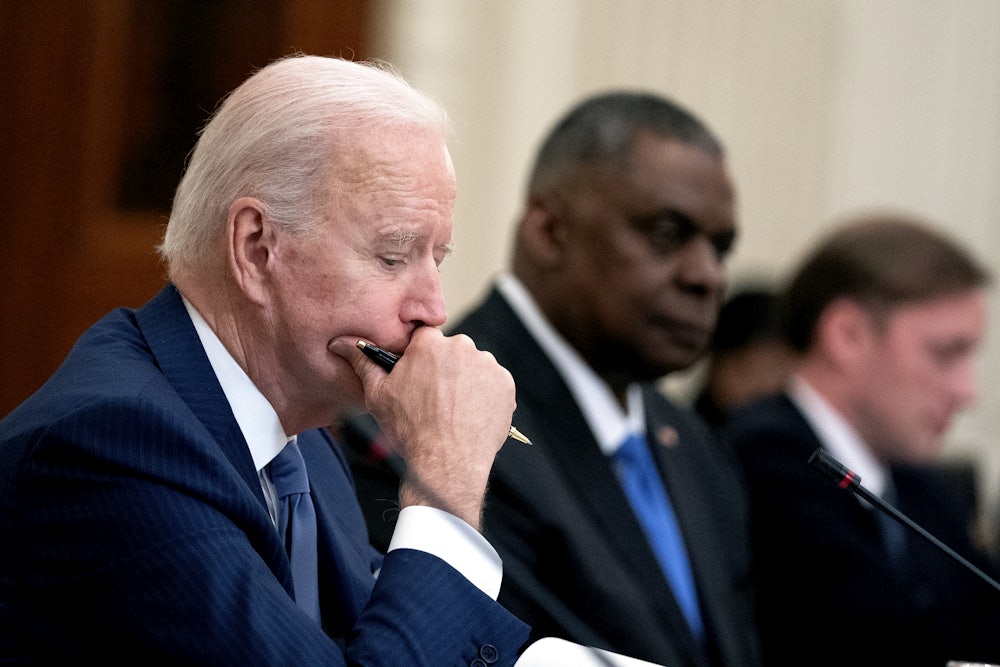Last Friday was a busy, confusing day on the climate front in America. First, in the morning, the Group of Seven—consisting of the United States, the United Kingdom, Japan, France, Canada, Italy, and Germany—released a 26-page communiqué outlining its commitment to mitigating climate change. Among the available routes highlighted by the global powers included a coalition-wide promise to phase out state subsidies for coal production. “We stress that international investments in unabated coal must stop now and commit to take concrete steps towards an absolute end to new direct government support for unabated international thermal coal power generation by the end of 2021,” the nations wrote.
Then, later that afternoon, U.S. District Court Judge James Boasberg handed down a much-anticipated ruling in the ongoing Dakota Access Pipeline saga. Boasberg found that, while the pipeline is currently operating without a valid environmental review as necessitated by federal policy and against the express wishes of three tribal nations along its path, the legal team representing the tribes was not able to prove that DAPL’s continued use met the threshold of being an active threat to their communities. (A point that could be proven if a proper environmental impact statement and tribal consultation was actually pursued and completed by the federal government.) Instead, an exasperated Boasberg said that his hands were tied and pointed the finger at the Army Corps of Engineers and its repeated refusal to take a stance on DAPL. “Its chosen course has instead been—and continues to be—one of inaction,” Boasberg wrote in his decision. “Whatever the reason, the practical consequences of the Corps’ stasis on this question of heightened political controversy are manifest: the continued flow of oil through a pipeline that lacks the necessary federal authorization to cross a key waterway of agricultural, industrial, and religious importance to several Indian Tribes.” Or, to translate: The Corps—and by proxy, the White House—could have called for the pipeline to be shut down while the new environmental review is obtained at any point over the last five months. Instead, it stood by and let the oil flow.
Reading Boasberg’s ruling in conjunction with the G7 communiqué, it’s hard to find a better pairing that exemplifies the crossroads facing the U.S. Following the Trump administration, which did everything possible to alert other global actors to its apathy toward the climate crisis, the Biden administration’s initial run of executive orders and agency directives, among them the decision to shut down the Keystone XL pipeline, indicated to some that the White House might actually be up for taking the necessary, radical action to stave off the carbon-induced warming of the planet. Viewed in a vacuum, the G7 announcement, and the American federal government’s willingness to take a public, active stance on killing coal, was another mark in Biden’s favor. But on closer read, the hedging in the G7 document’s language—“concrete steps towards an absolute end to new direct government support”—also mirrors the wishy-washy approach that has been provoking increasing levels of frustration and derision when it comes to Biden’s climate policy. And as the Army Corps’ continued hands-off approach to DAPL proves, every time the administration imposes these limitations on itself, only the people most in need of help wind up being hurt.
Earlier last week, the Henry Kissinger–founded International Energy Agency, based in Paris, stunned many in the climate and energy policy fields by stating the obvious and announcing that, by its own measure, “There is no need for investment in new fossil fuel supply.” As my colleague Kate Aronoff wrote following its release, the shockwaves rippling from the IEA’ s report stemmed from the fact that the agency was willing to take several steps beyond the mark being currently set by the planet’s major political powers.
Unlike Spain’s recently passed ban on the national production of all fossil fuels and its concurrent commitment to cut fossil fuel use almost entirely within the next two decades, the IEA’s decision was not a country with limited drilling interests enacting a mostly symbolic (but still welcome) piece of climate legislation. This was an institution regularly regarded as a bastion of incrementalism saying what too many seem scared to admit: It’s time to stop greenlighting new fossil fuel projects, and it’s past time to shut the most egregious ones (coal) down.
U.S. participation in the G7 commitment to end new coal funding was less impressive than that of Japan, whose continued reliance on the supremely toxic energy source has come under scrutiny on the international stage. Only last July did the Japanese federal government finally cut off the steady stream of loans it was providing to coal companies by way of the Japan Bank for International Cooperation. (Even then, both the government-backed and private banks initially wanted to focus the measure on the controversial “mountaintop removal” process.) Yet at last month’s White House climate summit—just nine months after Japan acceded to the pressure to cut off coal loans—Prime Minister Yoshihide Suga agreed to nearly double the nation’s stated carbon emissions reduction goal, going from the 2013-set mark of cutting 26 percent by 2030 to one of cutting 46 percent. The nation still has to back up these pledges with stringent actions, but the drastic jump in commitments across the board is what it looks like when a country recognizes that its goals are too limited and aims to beat the curve.
Meanwhile in D.C., the fight for both a sustainable climate model and accompanying Indigenous land and water rights remains an unsolved calculation at the federal level. Part of the the problem is that the country’s primary left-leaning political party is repeatedly forced to engage in inane culture wars over issues of vital global and national importance. Be it replacing coal and gas with wind and solar energy, cutting back on meat production and consumption, replacing combustible engines with battery-powered vehicles, or asking people not to water their damn lawn during a drought—there is no matter of federal energy or climate policy in America that is not also forced to contend with the deafening hum of the conservative, individualist counterattack.
Even while hobbled by the modern GOP’s corporate, antisocial sensibilities and the Constitution’s anti-democratic rules, the Biden administration could still act on a number of crucial policy items, such as instructing the Army Corps to shutter DAPL. It could instruct its representatives—for example climate envoy John Kerry, who had a disastrous interview with the BBC the Sunday before the G7 meeting—to stop dancing around interviewers’ direct questions about phasing out fossil fuels. Inexplicably, the administration has instead chosen to send White House–adjacent officials to appear on national and international news shows holding up the same neon sign: “Jobs, but greener!”
The natural result so far is a series of public gestures and policies that, even if eventually passed by Congress, do not look nearly as brave as those put out by Japan, Spain, or even the IEA. It’s frustrating that America’s broken political atmosphere stands in the way of even the most modest climate proposal making the jump to passable legislation. But White House decision-makers know what actually needs to be done, just as their critics know that some of what needs to be done will serve as easy campaign fodder for hyper-reactive conservative candidates down the road. The administration, like the nation and the rest of the world, is running out of time. And half-measures are all the more conspicuous as other countries start to reckon with what the 2050 climate goals actually mean.








